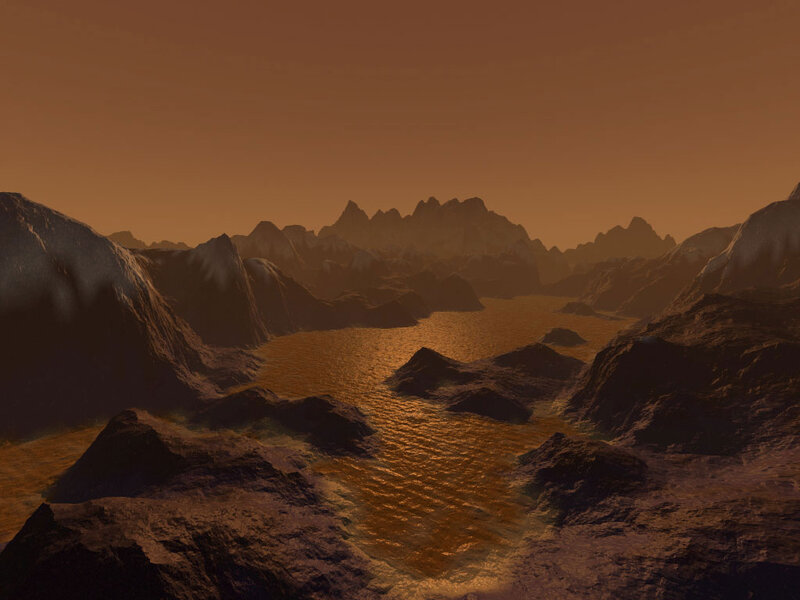What would life look like on Saturn's largest moon?
Loading...
What are the essential ingredients for life? You might be tempted to list things like liquid water, oxygen, and nucleotides. But are these chemicals truly essential, or are you just thinking like a typical Earthling?
In a study published last week in the journal Science Advances, a team of chemical engineers at Cornell University decided to leave behind all preconceptions of the essentials of life, producing a model that is nothing like life as we know it.
The researchers focused on Titan, Saturn’s largest moon, which NASA has said is a promising candidate for extraterrestrial life.
But with seas of liquid nitrogen and temperatures reaching 292 degrees below zero, Titan’s composition is radically different from Earth’s, as any life that could inhabit it would be. For example, the lipid bilayer of the cell membrane that is essential to all known life on Earth would not be practical on Titan.
The project was led by chemical molecular dynamics specialist Paulette Clancy, chemical engineering graduate student James Stevenson, and director for Cornell’s Center for Radiophysics and Space Research Jonathan Lunine.
"We're not biologists, and we're not astronomers, but we had the suitable tools," Clancy told the Cornell Chronicle. "Maybe it helped, since we didn't come in with any preconceptions about what must be in a membrane and what should not. We just worked with the compounds that we knew had been there and asked, 'If this was your palette, what can you make out of that?'"
Instead, the researchers left oxygen-based life behind and theorized about smaller organic nitrogen compounds. Using molecular simulations, they demonstrated that at the extreme temperatures on Titan cryogenic nitrogen membranes would have an elastic quality, similar to that of lipid bilayers in water on Earth. They also proved that such membranes could be made from compounds known to be in the atmosphere of Titan.
This approach could allow scientists to push the search for alien life outside of the previously designated “habitable zone” – the narrow band around a star where water neither freezes nor boils away.
While the findings are purely theoretical, it does provide clues to scientists as to what to look for when searching for alien life.
“The availability of molecules with an ability to form cell membranes does not by itself demonstrate that life is possible. However, it does direct our search for exotic metabolic and reproductive chemistries that would be similarly compatible under cryogenic conditions,” the researchers wrote in the study.
NASA seems to agree. It is currently working on sending a probe to Titan.
Although similar projects have been canceled due to problems with sustaining the power supply in the past, NASA is currently working on a new way to explore Titan.
The newest proposal is an autonomous submarine that would delve into the Kraken Mare methane sea and search for life. It is no more than idea at the moment, but if launched this new research would give the probe a better idea of what to look for.








